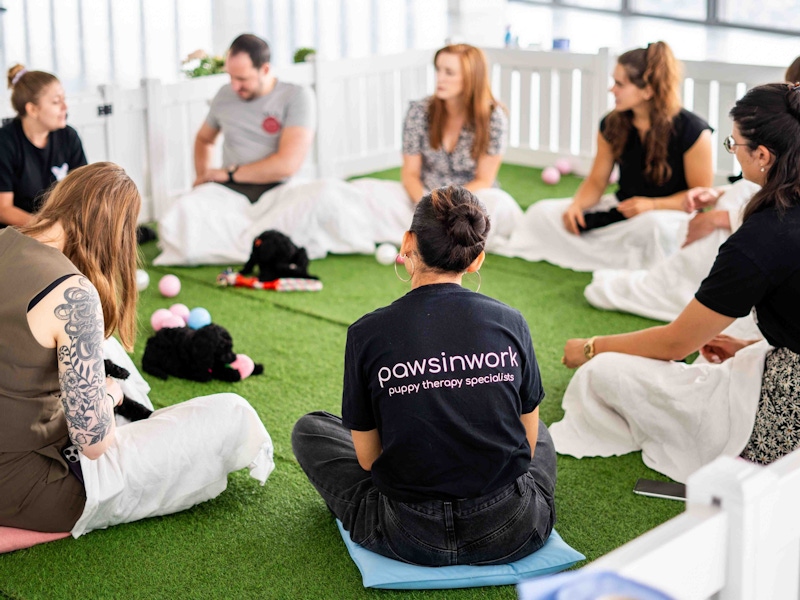How to develop a successful workplace wellbeing strategy
Mental health awareness has gained traction in recent years, but its global extent remains unknown due to taboos in many countries. In the UK, discussions around mental health have become more commonplace. While dedicated roles in company wellbeing departments are relatively recent, often those handling staff wellbeing are within HR, Facilities, Management, or voluntary networks. Passionate individuals typically manage these responsibilities as an 'extracurricular' activity.
So, cheers if you’re employed by a company with a dedicated wellbeing role, or if you’re the one introducing this role! We’re here to guide you on factors to consider when implementing a wellbeing strategy at your workplace. If you’re just beginning your company’s wellbeing journey, here are some suggestions to kick-start your campaign.

Where do I start?
Here are some ways you can incorporate elements at work to enhance employee wellbeing. We’ve provided diverse approaches to implement a wellbeing strategy, covering staff culture, training and employee benefits. To structure your strategy, we’ve organised these ideas into 5 categories: mental, physical, social, giving back and working environment.
Mental
Promote mental health awareness in the workplace to break the stigma and create an environment where employees feel secure discussing their mental wellbeing. Establish a team of qualified Mental Health First Aiders who can offer support and recognise signs of those in need. This ensures employees know their mental wellbeing is a priority. Having a structured support network provides confidence that help is available when the pressures of daily life become overwhelming.
Ensure that existing support systems, like Mental Health First Aiders or Employee Assistance Programmes, are widely communicated to all staff. Additionally, consider implementing practices such as encouraging mindfulness activities like meditation or yoga. Acknowledge that mental health is a valid reason for taking time off, and assure employees that it is not a sign of weakness. When staff take mental health days, emphasise the importance of disconnecting from work, and avoiding emails and calls.
Physical
In your company’s wellbeing strategy, address aspects of physical health such as nutrition, exercise, and sleep. Promote a healthy diet in the office for enhanced energy levels, mood, weight management, and illness prevention. Emphasise regular exercise to maintain fitness and release endorphins, which are essential for stress and pain management. Highlight the significance of a good night’s sleep for optimal functioning.
Consider additional strategies for physical wellbeing:
- Provide office fruit and healthy snack deliveries
- Facilitate team breakfasts and lunches to foster positive employee relationships
- Introduce standing desks to combat prolonged sitting
- Organise team fitness and inter-department challenges
- Implement a zero back-to-back meetings policy so people have time to grab refreshments ad stretch their legs before their next meeting
- Explore the idea of office sleep pods (yes, they are a thing!)

Social
Social connections are essential for workplace success, as demonstrated by a university study highlighting the superior performance of friends working together. To foster this spirit, create an environment that allows employees time and space to cultivate genuine workplace friendships. Embed recognition and praise into the company culture to enhance social dynamics.
Ensure a zero-tolerance policy on bullying is non-negotiable. However, merely stating ‘no bullying allowed’ is insufficient. Companies must dismantle social barriers, fostering an inclusive environment where employees feel free to be themselves. Fear of judgement, harassment, or discrimination creates a detrimental working environment. Education on social issues is crucial for building understanding and meaningful connections beyond typical workplace interactions.
Consider these small initiatives to strengthen working relationships:
- Establish a kindness corner with books, quotes and Positivi-tree for uplifting notes
- Form a team responsible for social events, such as Puppy Therapy or staff outings.
- Recognise awareness days by inviting motivational speakers or encouraging colleagues to share their stories at no cost. Everyone has a story worth hearing.
Giving back
Giving back is just as important as working a 9-5. It’s crucial to allow staff the opportunity to contribute and reciprocate these efforts. Consider implementing volunteer programmes or providing volunteer days, either company-initiated or allowing employees to choose their preferred charitable activities. Some companies even allocate up to 40-hours annually so employees can volunteer, enriching both the company and the community as part of their benefits package.
Including ‘giving back’ in your wellbeing strategy is synonymous with demonstrating care. This can be achieved in various ways, including acknowledging and empathising with pet bereavement, a topic close to our hearts. Recognise the importance of grieving for a pet, offering support through systems such as MHFAiders©. Additionally, consider innovative initiatives such as paw-ternity leave for new pet owners, sabbaticals for deserving employees, extending trust through flexible working programmes, extra holiday days during Christmas, or granting every employee a day off on their birthdays.
To further enrich wellbeing, introduce a monthly “green hour” as a gesture of appreciation for staff who exceeded their contracted hours. If time in lieu isn’t standard, let employees reclaim one of those hours each month for personal use - whether leaving the office early, running errands or simply taking time for themselves. At Paws we shut the office for one day each quarter for a ‘wellbeing day’ - a chance for every employee to do something for their wellbeing.
Working environment
Addressing the working environment in your wellbeing strategy may not be as simple as suggesting renovations, such as bringing in more natural light, especially when dealing with constraints like permissions or structural limitations. However, based on our daily experiences in various offices, we've observed that the best working environments often boast ample natural light. If physically adding windows is not feasible, explore creative solutions to simulate a brighter atmosphere.
A crucial addition to your strategy is actively promoting a healthy work/life balance. Encourage employees to fully disconnect during holidays, emphasising the importance of respecting these boundaries among colleagues. Expecting peak performance without allowing time for recharge is unrealistic.
Consider implementing the following to enhance the working environment:
- Install an anonymous ideas box to empower employees to share their thoughts.
- Create quiet spaces for phone calls, encouraging staff on lengthy calls to either work from home or find a more private setting to minimise distractions.
- And yes, you guessed it—puppy therapy!
Happy employees = productive employees
Optimal wellbeing equals enhanced productivity. When structuring your wellbeing strategy, focus on the desired outcomes for your staff. Consider whether the goal is education, inspiration, giving back, expressing gratitude, or fostering change. Despite wellbeing events being perceived as 'nice to haves,' they are crucial when undertaken for the right reasons.
Happier, healthier staff yields more benefits than meets the eye, translating to reduced turnover, fewer sick days, lowered costs, and diminished concerns overall. If you require assistance with events, wellbeing strategies, or mental health training, get in touch with Paws in Work today.

How and when to seek help for your mental health
1 in 4 adults face mental health issues in the UK. Discover ways to support your mental health and help others during difficult times.

It’s ok to talk about suicide
Globally, on average, one man dies by suicide every minute of every day. This Movember we had the privilege of speaking to Steve Carr (Mindcanyon) who was kind enough to open up and share his experience with suicide with us.

How to help your employees manage their work-life balance
Having a great work-life balance can seem like the pot of gold at the end of a rainbow — it’s a lovely idea, yet somehow always out of reach. But it doesn’t have to be that way. Let’s look at how you can help your teams achieve the elusive “great work-life balance”, creating a happier and more productive workplace.
